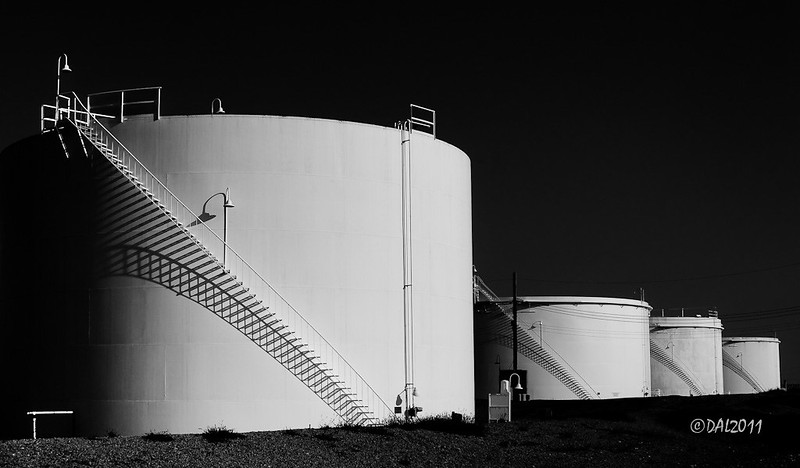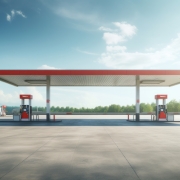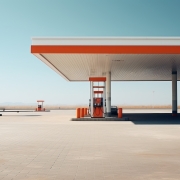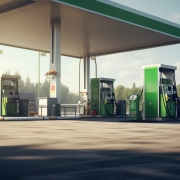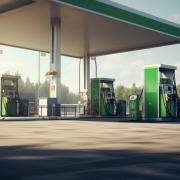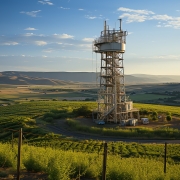When it comes to establishing a successful petrol station, the location is paramount.
Savvy operators must consider not only the visibility and accessibility of the site, but also its long-term profitability potential.
After all, the fuel business is highly competitive, with stations seemingly dotting every corner. To stand out, petrol station owners must strategically position their offerings in areas that cater to the needs and preferences of the driving public.
Price and convenience are the top priorities for the vast majority of customers, with a whopping 81% basing their fill-up decisions primarily on these two factors.
By carefully assessing the current performance and future outlook of a prospective location, entrepreneurs and investors can ensure their petrol station venture is poised for enduring success in this crowded marketplace.
The key is to provide a seamless, satisfying experience from the moment customers pull in to the moment they depart – an experience that starts with choosing the right real estate.
Factors Customers Consider in Petrol Station Selection.
When it comes to choosing a petrol station, customers are primarily swayed by two key factors – the price of the fuel and the convenience of the station’s location. According to industry insights from the NAC, a staggering 81% of consumers base their decision on where to fill up largely on these two considerations.
In today’s highly competitive petrol station market, with pumps seemingly on every corner, these factors play an outsized role in determining customer loyalty and patronage.
Savvy petrol station owners and investors must ensure their locations are not only visible but also easily accessible to passing motorists.
Before committing capital to a new venture, it is crucial to carefully assess both the current performance and future profit potential of the selected site. After all, success in this industry hinges on strategically positioning one’s station to attract and retain a steady flow of customers, day in and day out.
Fierce Competition in the Petrol Station Market.
With petrol stations seemingly on every corner, the competition to attract customers has never been more intense. Drivers these days have a plethora of options when it comes to fueling up, and savvy station owners must find ways to make their locations stand out from the crowd. Visibility and accessibility are key, as the vast majority of consumers base their decisions on price and convenience above all else. Careful market analysis is crucial before investing in a new petrol station venture, as success in this highly competitive industry depends on strategically positioning oneself to cater to the needs and preferences of today’s on-the-go drivers. It’s no longer enough to simply offer fuel – station owners must strive to provide a seamless, satisfying experience from start to finish in order to secure loyal, repeat business.
The Key to Petrol Station Success: Visibility and Accessibility.
Customers want petrol stations that are easily accessible and strategically positioned to meet their needs. In a market saturated with options, visibility and convenience are paramount.
Petrol station owners and investors must ensure their locations stand out, not only being highly visible but also readily accessible to customers on the go.
Before committing capital, it’s crucial to carefully assess the current performance and future profitability potential of a chosen location.
After all, success in the petrol station business is about more than just offering fuel – it’s about providing a seamless and satisfying experience for customers from the moment they pull in until the moment they drive away.
And it all starts with selecting the right location, one that is optimally positioned to attract and retain loyal customers in the long run.
Assessing Current and Future Profitability for Petrol Stations.
Before investing in a new petrol station, it is crucial to carefully evaluate its current profitability and future earning potential.
Setting up the physical infrastructure of pumps and a convenience store is just the first step – what truly matters is the station’s ability to attract and retain a steady stream of customers who will generate consistent revenue.
The location of the petrol station is a primary factor in determining its profitability. Visibility and accessibility are key, as customers typically base their decisions on price and convenience.
Conducting thorough market research to understand the competition, traffic patterns, and demographic trends in the area is essential.
This will help assess the station’s ability to capture a sizable share of the local fuel and retail market.
Beyond just the current performance, investors must also project the long-term profitability of the site.
This involves analyzing factors like projected population growth, future development plans in the area, and potential shifts in commuting or driving habits.
By taking a forward-looking approach, entrepreneurs can make informed decisions about whether the location is poised for sustained success in the years to come.
Ultimately, the goal is to identify a petrol station site that not only meets current customer demands but also has the potential to remain a profitable venture in the long run.
Careful analysis of these critical factors can mean the difference between a thriving business and one that struggles to stay afloat in a highly competitive market.
Providing a Seamless Customer Experience
From the moment a customer pulls into a petrol station, their experience should be seamless and satisfying. It’s not enough to simply offer fuel – the modern petrol station must cater to a wide range of customer needs beyond just refueling.
Savvy station owners understand that their locations are more than just pit stops, but rather hubs where customers can conveniently take care of various errands and tasks.
By anticipating and catering to the diverse needs of today’s on-the-go consumers, petrol stations can differentiate themselves from the competition and foster lasting loyalty.
Whether it’s grabbing a quick snack, picking up a parcel, or enjoying a freshly brewed coffee, the most successful stations will be those that transform the fueling experience into a one-stop-shop for customers from arrival to departure.
The Key to Success in the Petrol Station Business.
Choosing the right location is the foundation for attracting and retaining loyal customers in the petrol station business. With so many options available to consumers these days, the visibility and accessibility of a station can make all the difference.
Petrol station owners and investors must carefully assess both the current performance and future profitability potential of a location before committing significant capital.
It’s not enough to simply set up pumps and wait for customers to arrive – success hinges on strategically positioning the station to provide a seamless and satisfying experience from start to finish.
By selecting a site that is both prominent and conveniently located, station operators can position themselves to capture the attention and loyalty of the local driving population, setting the stage for long-term prosperity in this highly competitive market.
Selecting the Ideal Petrol Station Location.
When it comes to establishing a successful petrol station, the location is of paramount importance. Three key factors to consider are visibility, accessibility, and profitability potential.
Visibility is crucial in ensuring that passing motorists easily spot the station, drawing them in to fill up.
The station should be situated along a well-traveled roadway, with clear signage and branding that catches the eye. Accessibility is equally vital, as customers want to be able to enter and exit the station with ease, without navigating complex turns or tight spaces.
The station’s layout and access points must be designed with the flow of traffic in mind.
Lastly, assessing the profitability potential of a location is essential. Factors such as the surrounding population density, average household income, and competitor density will all influence the station’s ability to attract and retain a steady stream of customers.
Thorough market research and feasibility analysis are necessary to determine the long-term earning capacity of a prospective site.
Only by carefully weighing these three key elements can petrol station owners and investors maximize their chances of securing a truly prime location for their business.
Positioning for Long-Term Success.
When it comes to building a successful petrol station, the strategic location of the establishment is paramount. Savvy entrepreneurs and investors must carefully evaluate not just the current performance of a potential site, but also its long-term profitability potential.
A visible and easily accessible location is crucial, as it allows the station to efficiently attract and retain a loyal customer base in the face of fierce market competition.
But simply being in the right spot is not enough – the chosen location must also be primed to deliver sustainable returns over the years to come.
By taking the time to meticulously analyze factors like traffic patterns, demographics, and future development plans, forward-thinking petrol station owners can position their business for enduring success, ensuring that their investment continues to pay dividends well into the future.
The Importance of Location in the Petrol Station Business.
As the petrol station industry becomes increasingly competitive, the strategic placement of one’s business can make all the difference in attracting and retaining loyal customers.
While factors like fuel prices and convenience are undoubtedly important, the location of a petrol station is truly the cornerstone of its success.
Careful consideration must be given to both the current performance and long-term profitability potential of a chosen site.
By positioning the station in an area that is highly visible and easily accessible to passing motorists, owners can ensure that their offering stands out among the myriad of options available.
Ultimately, success in the petrol station business is not just about setting up pumps, but about strategically aligning one’s operations with the needs and preferences of the target market.
With location playing such a pivotal role, entrepreneurs and investors must meticulously analyze all relevant factors before pouring capital into a new venture, knowing that the right site can be the key to a thriving, profitable enterprise.

